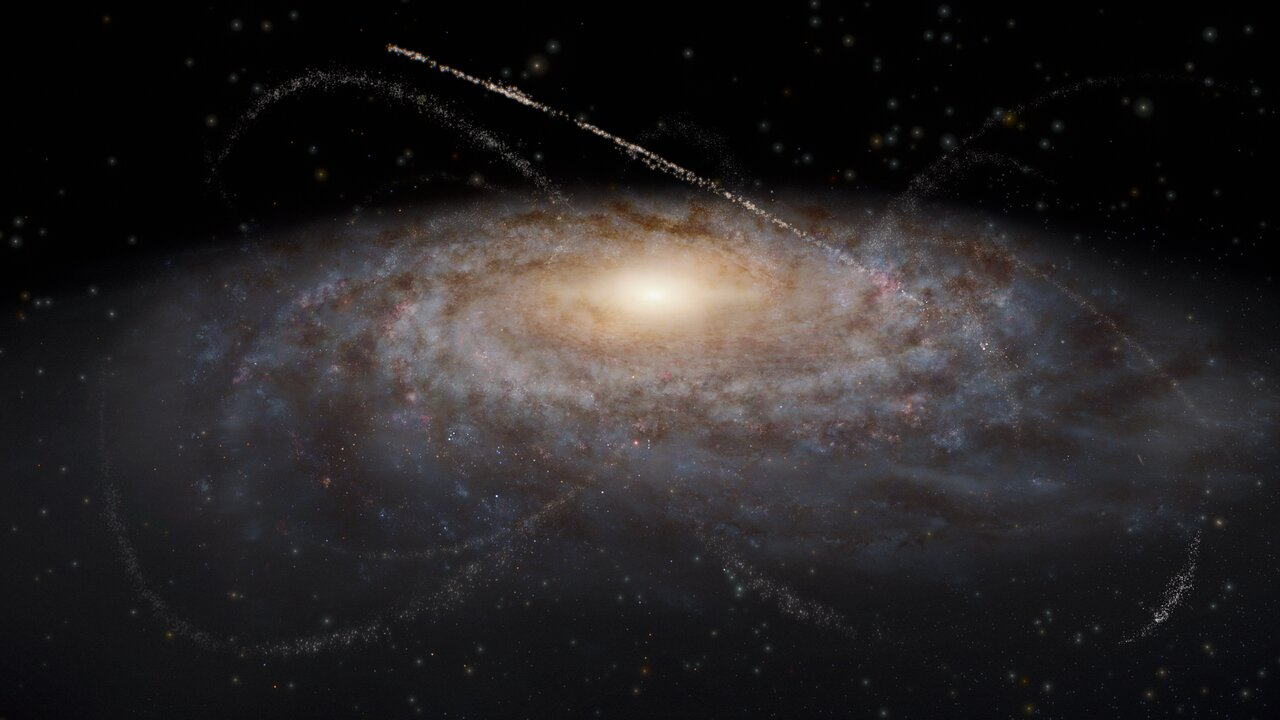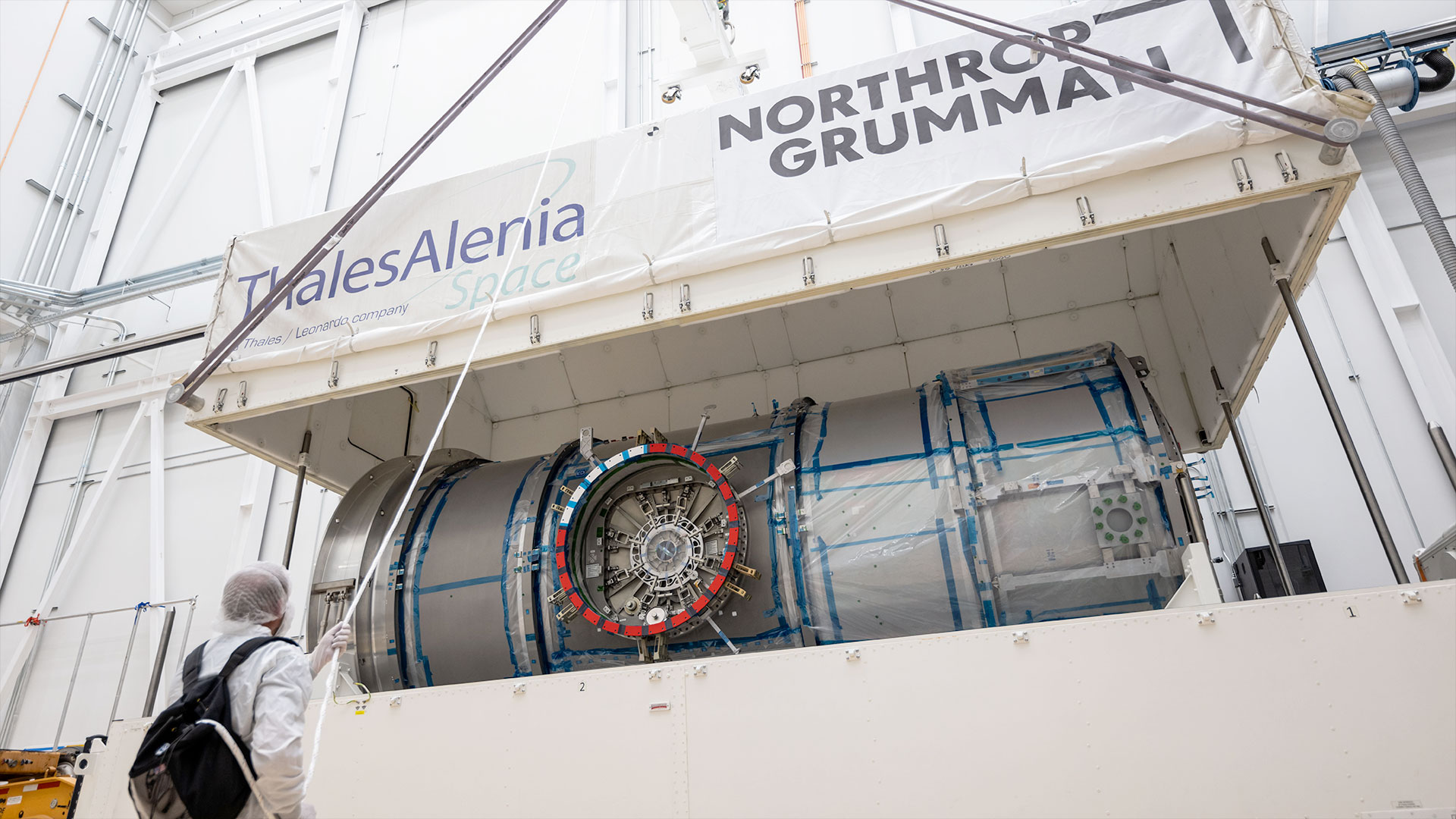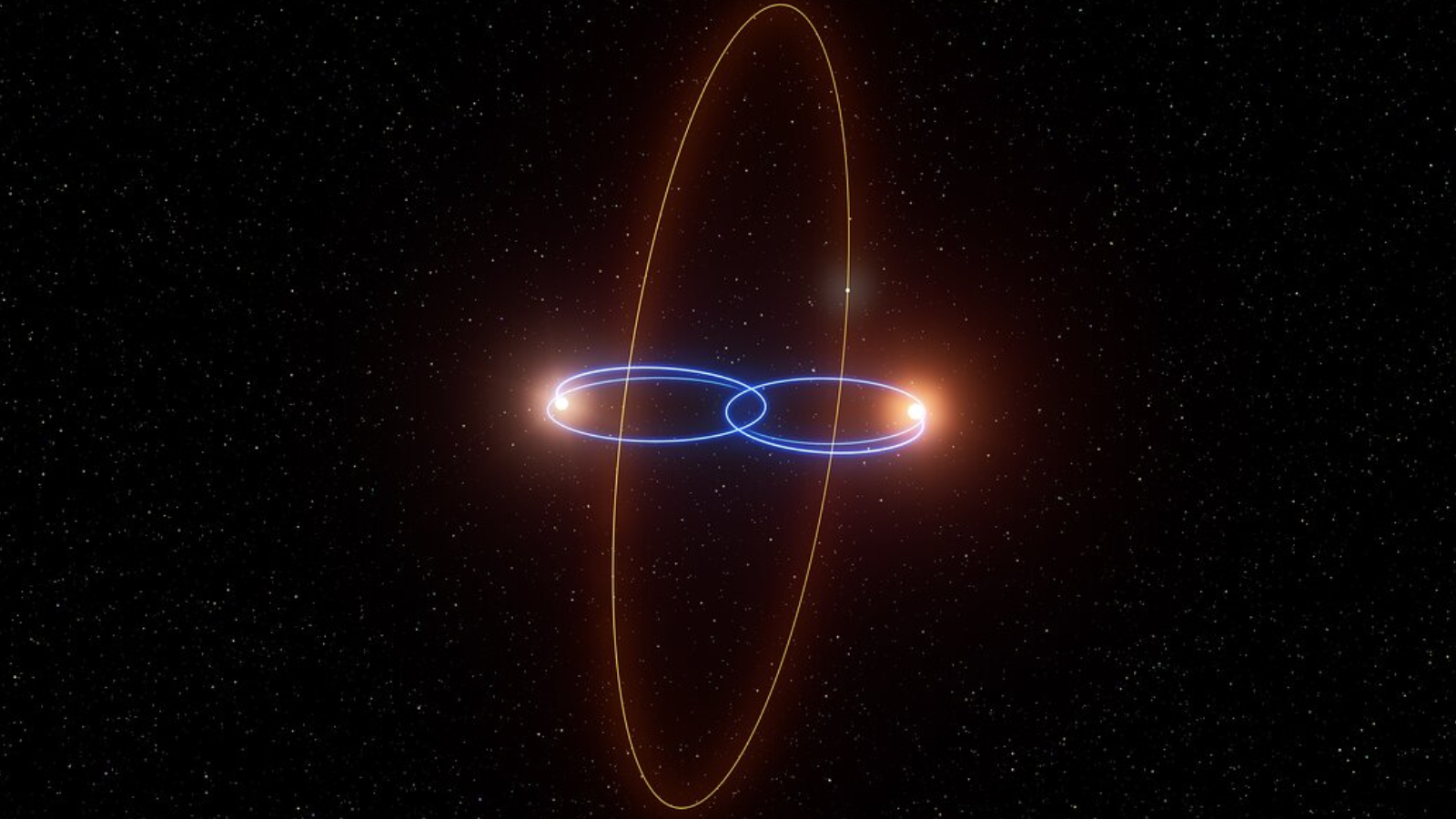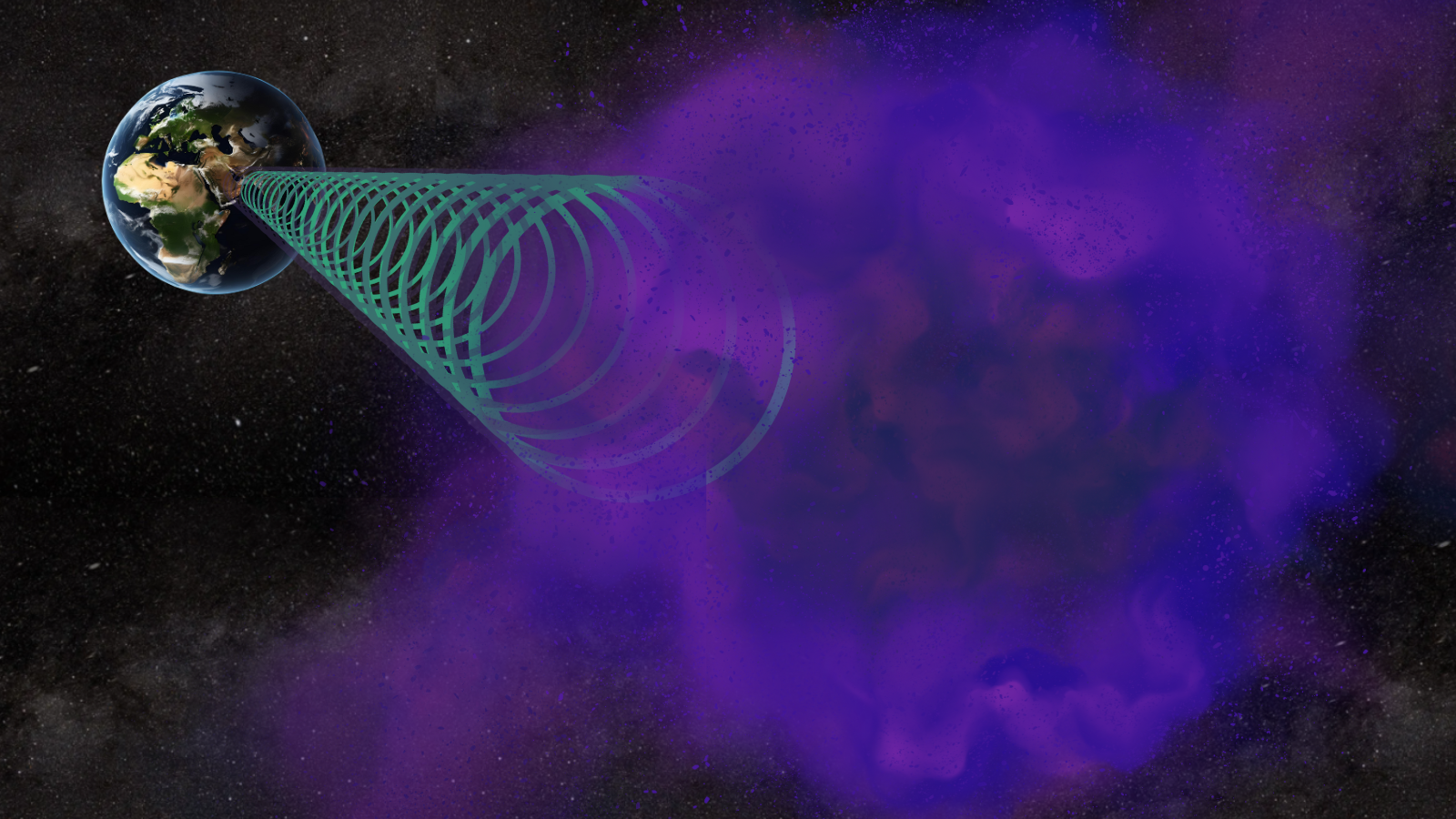Mysterious dark matter may leave clues in 'strings of pearls' trailing our galaxy
"If we find a pearl necklace with a few scattered pearls nearby, we can deduce that something may have come along and broken the string."

Starting late next year, the Vera C. Rubin observatory, a $700-million telescope nearing completion in northern Chile, plans to gather clues about the nature of dark matter by studying gaps between streams of stars that orbit at the outskirts of our galaxy.
These gaps are found within starry trails left behind after the Milky Way gravitationally shredded nearby galaxies, within which the stellar remnants exist. These are useful tracers of dark matter — the invisible, universe-permeating substance that surrounds most galaxies in halos but is yet to be directly detected. In stellar streams, the influence of dark matter can be inferred "in the same way that twinkle lights can reveal the shape of a tree that they are strung up around, even when we can't see the branches or foliage," scientists say.
"Stellar streams are like strings of pearls, whose stars trace the path of the system's orbit and have a shared history," Jaclyn Jensen, a graduate student at the University of Victoria in British Columbia, said in a statement. "If we find a pearl necklace with a few scattered pearls nearby, we can deduce that something may have come along and broken the string."
Related: How Earth's new Rubin Observatory will usher in the next era of asteroid space missions
A key prediction of the standard cosmological model, which is based on the assumption that dark matter is "cold" (meaning it has very weak interactions with ordinary matter and electromagnetic radiation), is that dark matter is made up of smaller clumps. When these clumps interact with other structures, scientists believe they disrupt the dynamics of those structures and even alter their appearance.
In stellar streams, these effects show up as "kinks," or gaps, in the starry trails. It is these disturbances that can be imaged by the Rubin Observatory's unprecedented digital camera, according to the statement by the collaboration.
Stellar streams, which can be distinguished from clusters of other stars by telltale motions unique to their respective cohorts, are particularly useful candidates to study the nature of dark matter, scientists say. Their cosmic homes in the outskirts of our galaxy makes them less susceptible to interactions with other structures, which could muddle the influence of dark matter.
Get the Space.com Newsletter
Breaking space news, the latest updates on rocket launches, skywatching events and more!
If all goes to plan, scientists estimate the Rubin Observatory would be able to spot starry trails five times farther away than present telescopes can decipher, bringing to light new populations of stellar streams in our galaxy's outskirts.
"I'm really excited about using stellar streams to learn about dark matter," Nora Shipp, a postdoctoral fellow at Carnegie Mellon University whose previous research discovered 11 new stellar streams around the Milky Way, said in a statement. "With Rubin Observatory, we'll be able to use stellar streams to figure out how dark matter is distributed in our galaxy from the largest scales down to very small scales."
Earlier this month, the Rubin Observatory collaboration announced the completion of the telescope's eye on the sky, which at a staggering resolution of 3,200 megapixels and spanning the size of a compact car is the world's largest digital camera.
"Its images are so detailed that it could resolve a golf ball from around 15 miles away, while covering a swath of the sky seven times wider than the full moon," Aaron Roodman, an astrophysicist at Stanford University and Rubin Observatory Deputy Director and Camera Program Lead, previously told Space.com. "It will enable really incisive studies of the expansion of the universe and dark energy."
Similar images of the Andromeda galaxy from NASA's Nancy Grace Roman Space Telescope, an upcoming infrared observatory designed to look for planets beyond our solar system and decipher the physics of distant stars, could help astronomers study stellar streams beyond our own Milky Way and decipher yet more dark matter clues. The Roman Space Telescope is currently set for launch in May 2027 and is projected to study the universe for five years from its orbit a million miles from Earth.
Scientists say these observations could narrow down what types of particles constitute the dark matter clumps, which would then help them constrain the properties of the mysterious substance's long-sought mysteries.
Join our Space Forums to keep talking space on the latest missions, night sky and more! And if you have a news tip, correction or comment, let us know at: community@space.com.

Sharmila Kuthunur is a Seattle-based science journalist focusing on astronomy and space exploration. Her work has also appeared in Scientific American, Astronomy and Live Science, among other publications. She has earned a master's degree in journalism from Northeastern University in Boston. Follow her on BlueSky @skuthunur.bsky.social









